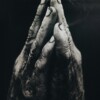
God’s Almost Chosen Peoples: A Religious History of the American Civil War
More than two decades ago, James M. McPherson’s landmark Battle Cry of Freedomhailed a new era of interest in American Civil War studies.1 Curiously missing, however, from the standard works on the Civil War before the mid-1990s was sustained analysis of religion in the Civil War. In recent years, this missing link in American Civil War studies has been redressed with notable works by James H. Moorhead, Charles Reagan Wilson, Gardiner H. Shattuck, Steven Woodworth, Harry Stout, Mark Noll, Drew Gilpin Faust, John Wesley Brinsfield Jr., Charles Reagan Wilson, and Randall C. Miller.2 Collectively, these noted historians have prioritized religion as key component in the war. George C. Rable, in his God’s Almost Chosen People: A Religious History of the American Civil War skillfully adds to a growing literature on this noteworthy subject. Rable’s work raises the bar for future studies by explaining convincingly why the American Civil War cannot be properly understood outside its religious dimensions.
The sheer weight of Christian influence in antebellum America was enormous in educational, social, cultural, intellectual, and political circles. In a sense, Protestant evangelicals were the moral conscience of the nation which made their opinions and viewpoints relevant to the conflict. The split of the Presbyterian, Methodist, and Baptist denominations in the preceding decades of the Civil War was all the more alarming since their religious affiliation transcended geographical lines. On the eve of the war, both northern and southern pastors and religious leaders urged caution but the onset of actual fighting cast fence-sitting aside. Very early in the conflict, the war was framed as a religious struggle—the North accused the South of sin in relation to slavery, and the South accused the North as a haven for infidelity and heterodoxy.
The war, however, produced some quandaries for theologians. Though the Protestant tradition worked to avoid “political preaching,” politicians frequently encouraged moral support from the pulpit. Southerners were expected to extol the virtues of slavery and secession and Northerners were encouraged to reinforce patriotic Unionism. Paradoxically however, Rable notes that neither the Union nor Confederate politicians supported the hiring of chaplains and were infrequently indifferent to them. Even with the support of sympathetic commanders, the number of chaplains remained remarkably low though their numbers rose in the latter part of the war. Both northern and southern commentators were remarkably consistent in dualistically interpreting each success as a sign of God’s blessing and favor and each failure or defeat as God’s displeasure and punishment due to their wickedness. To curry God’s favor, particularly in southern circles, pastors and political leaders summoned troops and civilians alike to abandon wickedness and humble themselves before God. Others worried that camp life undermined Christian morality through mingling godly soldiers with the sordid company of unrighteous troops. Several vices were attacked as prominent in war-time camps, such as drunkenness, sexual immorality, gambling, and swearing, but only Sabbath-breaking rose to the level of moving God to withhold victory as a means to gain one’s attention. The other sins, though evil, were personal, but the latter was corporate in effect. Almost superstitiously, religious leaders often suggested that Fast Days and salient signs of humility would redirect God’s wrath toward blessing armies with victory rather than punishing them through defeat.
The effectiveness of chaplains depended on a number of factors. Often their role stemmed from the level of interest of their camp commanders. Notable generals such as Robert E. Lee and Stonewall Jackson encouraged their contribution, but others ignored them as needless distractions. Individual chaplains could likewise help or hinder their cause depending on their personal conduct. The quality of a sermon mattered little if the chaplain showed genuine concern and proved willing to endure the hardships of the camps along with the troops. Lazy or indifferent chaplains were in turn ignored irrespective of their sermon quality. The numbers remained remarkably low though they were more in demand toward the latter part of the war. Revivals were frequent and even more so as the war progressed, but despite this, Rable notes that northern revivals went largely unreported outside the religious press, but both religious and non-religious media outlets reported on southern revivalism. A sense of urgency seemed to sweep through the camps in the last year of the war and conversions grew larger and more frequent as solders struggled to personalize the meaning of the conflict.
Southern churches in particular faced many troubles during the war. Because the bulk of the battles were fought in the South, many were vandalized, ransacked, and a few outright demolished as a hated symbol of southern ideological resistance. Though the churches served no direct military purpose, Yankee destruction of these churches reflected their recognition of the key role that religion played in the war. As northern armies increasingly occupied southern territories, Yankee soldiers often attended southern churches, to the uneasiness of southern parishioners. As if Yankees occupiers were not enough, southern refugees flooded neighboring churches who were escaping from occupied territories. Though one would think southerners would help alleviate the suffering of their fellow countrymen, often they treated them as intrusive foreigners. As the war seemed without end, the political and military leaders placed unrealistic and meddlesome restrictions on the churches. Pastoral sermons, for example, were carefully monitored both for what they said—or did not say—in the pulpit. Union generals were often suspicious of pastors who failed to pray on behalf of Lincoln in the same manner that southern generals discouraged “praying for one’s enemies.” In fact, in southern zones occupied by northern armies, it was not uncommon for generals to order pastors removed from the pulpit if they sermonized anything not to their liking.
The war naturally called upon all Christian people to reflect on the larger meaning of the war. Rable, for example, argues that the war forced southerners to reconsider the nature of slavery in two primary ways. First, many argued that southern laws that prohibited teaching slaves to read and write subsequently prevented them from reading the Scriptures and was hardly becoming of a Christian people. Second, laws that failed to recognize slave marriages legally and permitted masters to separate children from parents poorly reflected Christian family values. Though many southerners questioned the qualitative nature of slavery, hardly anyone questioned the institution of slavery. Irrespective of these moments of inner self-reflection, most southerners remained wedded to the Manicheanian delusion that their cause alone was noble and just and that God could not bless the infidel North. Even in defeat, the South was touted as just and morally superior. In many respects, the Lost Cause mythology was a post-war continuation of the pre-war theme that the southern cause had been just, but with the twist that God had paradoxically chosen to bless southerners through defeat rather than victory. Increasingly as the possibility of defeat sank in, many cast salvation more in personal rather than nationalistic terms. This shift is explainable due to the fact that the survival of the Confederacy seemed unlikely, but also because the constant fear of death forced soldiers to face hard questions about the reality of life after death. Southerners demonstrated remarkable flexibility in their theological reflections, although it hardly merited sophistication. The same dualism existed after the war as it did in the war.
Though Rable does not cover much beyond the war, this work echoes the conclusions of other religious historians who attempt to explain the loss of evangelical influence in the post-war era. The inability of American Protestant evangelicalism to manage the moral crises created by slavery and the Civil War and subsequently the “scattershot theology” of American wartime religious commentary help explain its loss of influence in the post-war era. Theologically, the religious commentary of the war proved rather shallow and pretentious because many in theological circles argued as if they “knew” God’s will in conflict. Ironically, the religiously elusive Abraham Lincoln proved more theologically astute when he claimed that God’s will in the war remained ultimately a mystery. In conclusion, Rable’s work has properly centralized religion as one of the key causal factors in both triggering and sustaining the war and has raised the demand for further research on this important topic. Historians of the past twenty years have established the fact that it is as difficult to explain the Civil War without reference to religion as it would be to ignore slavery as a factor. Slavery may have been the central issue of the war, but religion provided the ideological framework in which the war was fought.
Cite this article
Footnotes
- James M. McPherson, Battle Cry of Freedom: The Civil War Era (New York: Oxford University Press, 1988).
James H. Moorhead, American Apocalypse: Yankee Protestants and the Civil War (New Haven: Yale University Press, 1978); Charles Wilson Reagan, Baptized in Blood: The Religion of the Lost Cause (Athens, GA: University of Georgia Press, 1980); Gardiner H. Shattuck, A Shield and Hiding Place: The Religious Life of the Civil War Armies (Macon, GA: Mercer University Press, 1987); Randall M. Miller, Harry S. Stout, Charles Reagan Wilson, eds., Religion andthe American Civil War (New York: Oxford University Press, 1998); Steven E. Woodworth, While God is Marching On: The Religious Life of CivilWar Soldiers (Lawrence: University Press of Kansas, 2001); John Welsey Brinsfield, Jr., William C. Davis, Benedict Maryniak, and James I. Robertson, Faith in the Fight: Civil War Chaplains (Mechanicsburg, PA: Stackpole Books, 2003); Harry S. Stout, Upon the Altar of the Nation: A Moral History of the American Civil War (New York: Viking, 2006); Mark A. Noll, The Civil War As a Theological Crisis (Chapel Hill: University of North Carolina Press, 2006); Drew Gilpin Faust, This Republic of Suffering: Death and the American Civil War (New York: Alfred A. Knopf, 2008).























